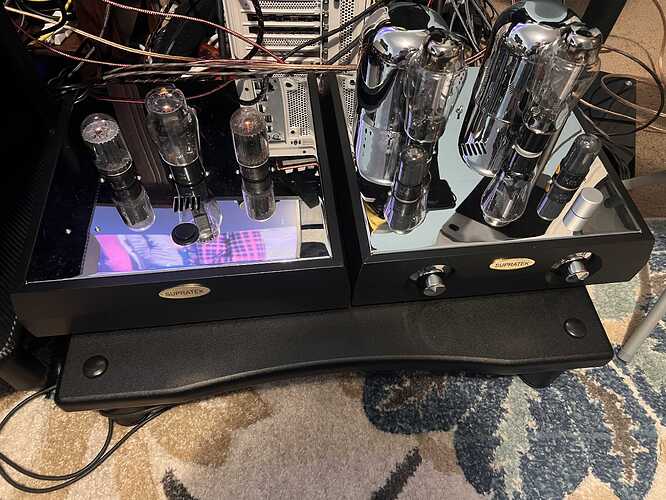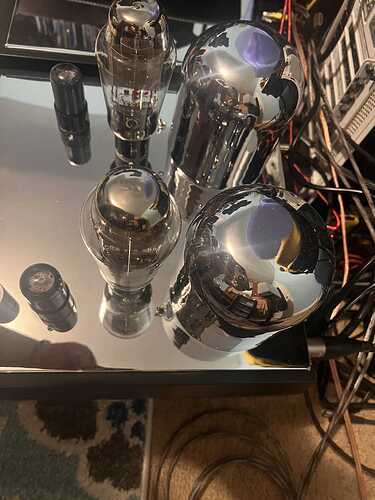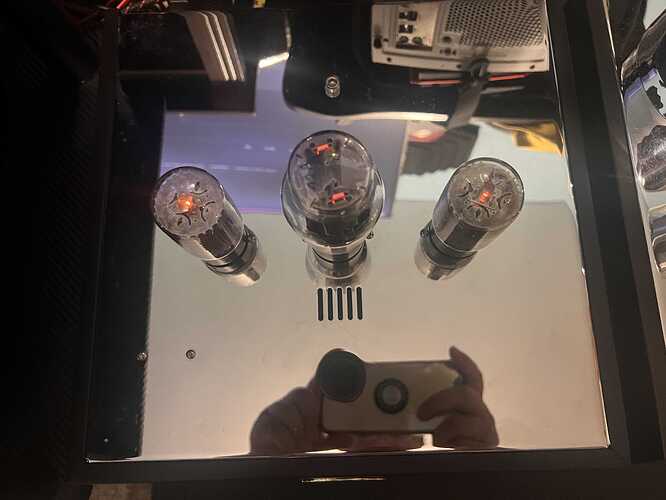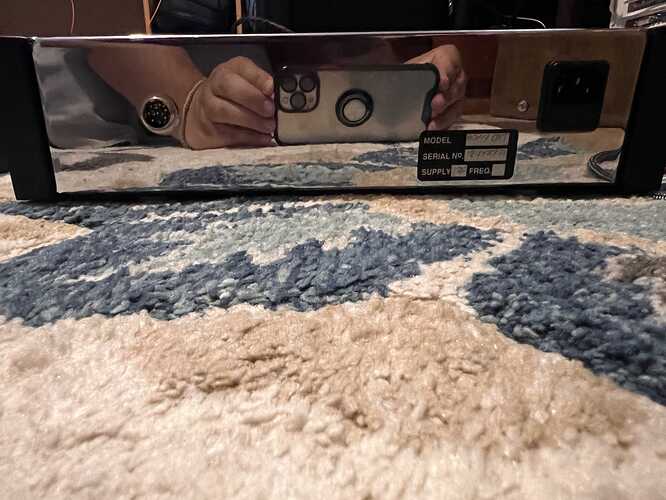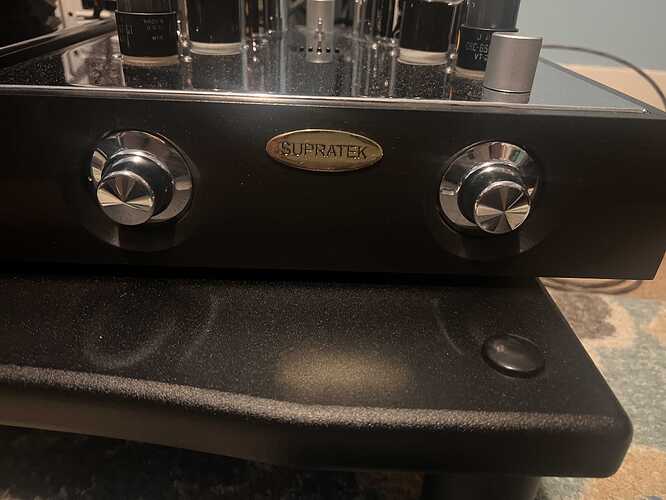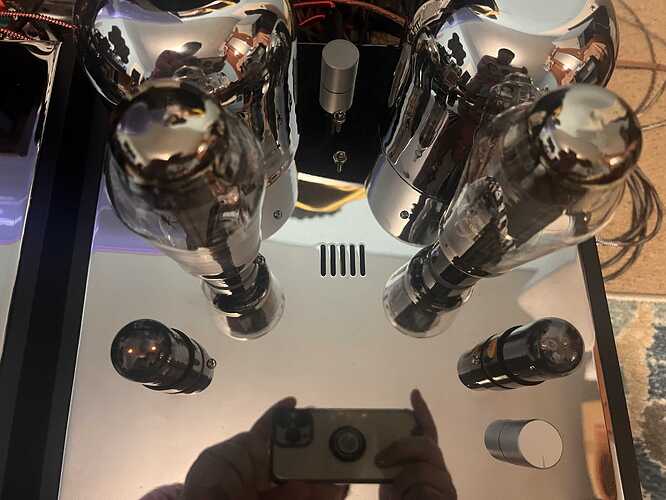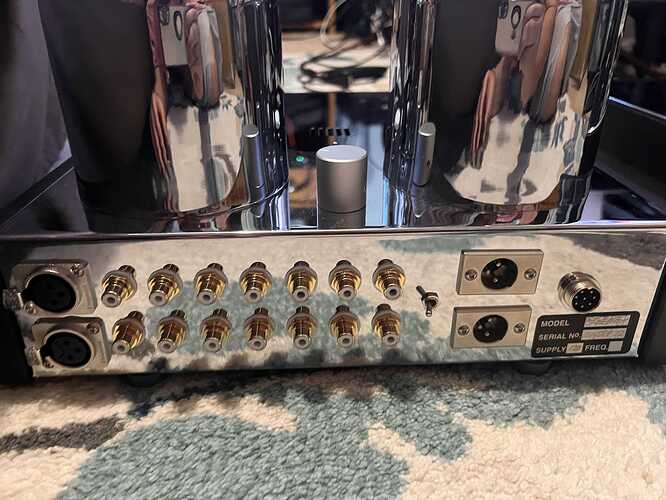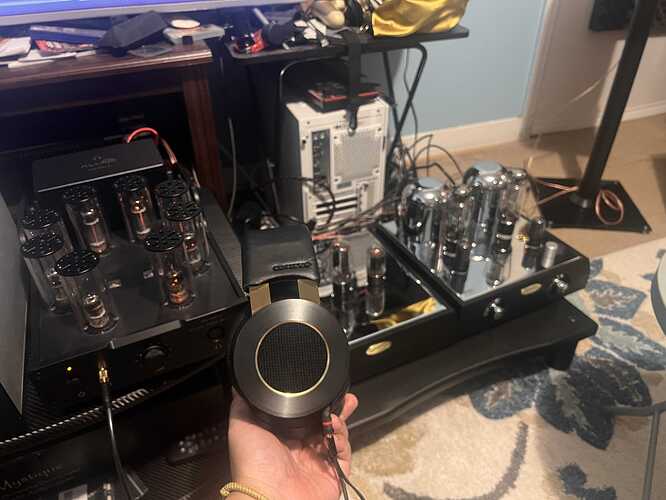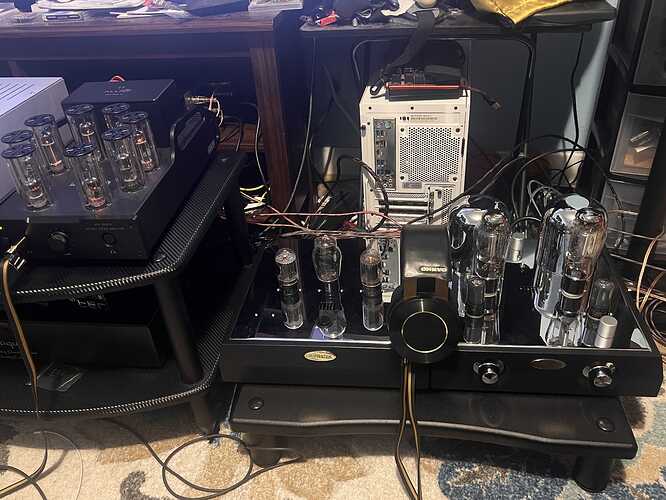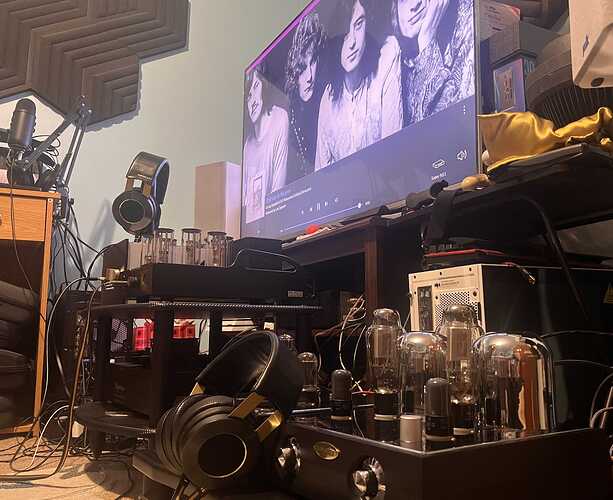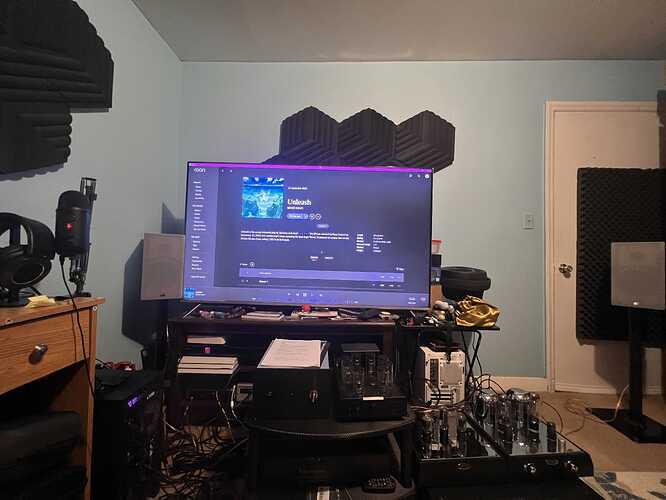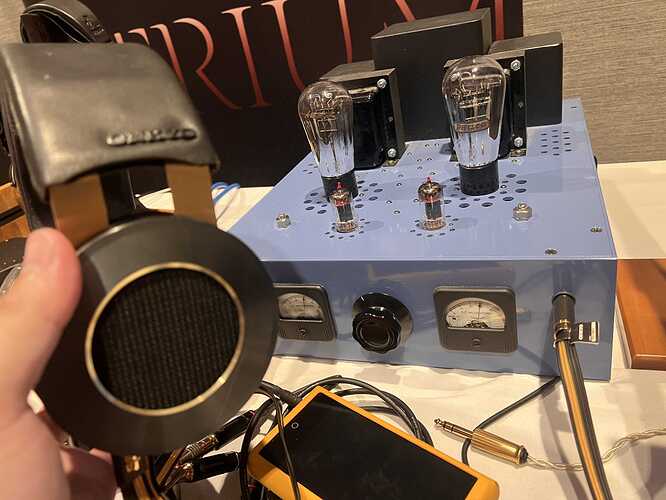It’s been pretty much a short time since I had the Supratek Cabernet DHT, but I will go ahead and create a thread for Supratek because this preamp is pretty darn special I must say. It really deserves all the praises other forums have said about the Supratek preamp. The Supratek I have is the Supratek Cabernet DHT. It is a DHT preamp that can take 45 tubes, 300B tubes, 2A3 tubes (per the seller I talked with), and 6SN7 tubes for the output tubes. The Supratek Cabernet DHT in my opinion buff tonality, detail, clarity, tighten-up bass, and vocals just sound so sweet when I was using the 45 EML Mesh tubes with this preamp. In this first post, I will talk about its technicality and the issues I had in the short period of owning it. I will talk about my 1st impression of the Supratek regarding how it sounds in my system after.
Features:
The Supratek Cabernet DHT is Supratek first DHT preamp dated back in the 90s. One of the biggest updates to the newer Supratek Cabernet DHT preamps is that it now is able to utilize both 300B/45 tubes or 6SN7 instead of having to choose 1 or the other.
**
1. * Tubes it could use:
**
2 of each 6H8P/6SN7 and 300B/45/2A3 Go in main chassis
2 6N3C (5881, 6L6GC ok) Go into power supply
1 5RY4, 5U4C (5AR4, GZ37, GZ32, GZ34, 5V4G ok) Go into power supply
274b as a rectifier is not sufficient for the current draw of the unit. Do not use or you’ll burn it out quickly if not instantly. Stick to 5AR4 / 5U4G(B). I was informed that GZ34 metal or Elrog 5U4G for rectification would be best. No adjustment of bias or any other adjustments is necessary throughout tube life.
Per the seller that informed me that the local US repair guy for the Supratek DHT informed him, “On the DHT sockets. I placed a red dot (w/sharpie) between the 2 big pins facing toward the centerline of the unit. Those 2 pins around the ‘dot’ are the filament pins (2 larger pins on the tube). Make sure they face inwards/towards each other l/r. it is easy to insert them the wrong way if not paying attention and fry something. The switches (there is one on each side flanking the DHT sockets) behind the sockets are for the Filament Voltage, back (towards dome) = 5v (300b),… and forward = 2.5V (2a3/45). You will fry your 45’s pretty quickly if you run them at 5v… switch on the back is for the use of XLR or RCA,… it properly sets up the grounding between the 2. Switched towards the outside of the unit = XLR,. Towards the RCA = RCA.” 300B/45/2A3 goes at the top of the main unit and the 6SN7 tubes go at the bottom of the main unit.
**
2. The Power
**
Ok, so there is a big power button at the bottom middle of the power supply unit. The 2 6N3C (5881, 6L66GC ok) goes left and right in the power supply unit. Right in the middle is where the rectifier tube (5RY4, 5U4C (5AR4, GZ37, GZ32, GZ34, 5V4G ok)) goes. At the back of the power supply unit, there is a pin that connects to the main unit and a Power IEC socket. Right below the Power IEC socket is where the fuse is located. Use some tool to pull the rectangular drawer and you will find the fuse and the spare fuse located. I only had to replace the fuse twice. 1 time, it just blew up out of nowhere and the 2nd time, I didn’t know I put the fuse on backward, but I went ahead and replace it anyway. If you put the fuse on backward, you will get a lot of static distortion, so you will know if you put it on backward. I talked to the repair guy Johnny. Johnny told me that even though it’s rare, sometimes the DHT fuse will just blow up. His suspicion is that with some of the currently manufactured DHT’s today, as they heat up the grid shifts and pops a little and for a brief time will overdraw current which blows the fuse. Supratek recommends 3.15a or 4a fuse (5x20mm size). If the 3.15a keeps blowing up, it is recommended to just use 4a fuses because it’s due to the lower-rated fuse and just a surge of current as the pre is warming up. Johnny also informed me he likes the ceramic ones but glass is fine too. It’s not a big deal, you can buy backup fuses for like $7 USD for 5 fuses on Amazon.
**
3. The pots, switches and connectors
**
Now, there is Volume pot (left) and Selector pot (right) in front of the main unit. Volume pot controls volume in the preamp. Selector pot is how to select which input you will be using. There is a gain adjustment pot at the top of the main unit. If it’s flicked up, it will use the gain pot. If it flicks down, it will be in “gain bypass” and not use the gain pot, this is recommended. The only time you should be using gain is if you are using a high-power amp and you have to make adjustments until the unwanted noise disappears. Otherwise, the manual recommends flicking down for gain bypass. Below that switch is the mute switch. Flick up to mute and flick down to unmute. At the top bottom right, there is a balance pot. The balance pot lets you adjust if you want to hear more left or right. At the back of the main units is the input and output connectors. 1st input is the XLR input. 2-5 is the RCA input. 6th RCA is 6SN7 output. 7-8 RCA is 300B/45/2A3 output. The XLR output is only 300B/45/2A3 output. Flicking the switch at the back of the unit left will use RCA outputs. Flicking the switch right will use the XLR output.
**
4. 1st impression
**
Honestly only had like 3 days of serious listening (a short 3-4 hour session). The rest was casual listening. Probably had this unit about 1 in a half weeks, but I went to the Schiit meet for the weekends, so minus 3 days. So you can take this impression however you want.
For headphones I used the Audio Technica W10VTG (romantic sounding headphones that sound sweet with female vocals. Very good with pop genres with female vocals), Audio Technica L3000 (fun sounding bass headphones with a unique style of soundstage with the drivers playing behind your ears. Because of it’s tuning and fun distortion, it excel with rock, and pop genres), and Onkyo A800 (Most natural sounding headphones I ever heard. Tonality cannot be beat and is prefer with songs with vocals and acoustic instruments. Thanks to the collaboration with Gibson Guitar on tuning, electric guitar, electric bass, snare drums, kick drums, cymbals, and vocals also sound amazing and probably my favorite). For headphone amps, I used the Beta22 and Allnic HPA-5000XL.
For my speaker setup, I use the Polk Reserve R200 and Schiit Vidar 2. The Schiit Vidar 2 gives a nice clean sound output making the Polk R200 sound cleaner than I ever heard them on. Because I am so used to the tone in the Onkyo A800, I mostly play Jrock/Jpop music on the Polk Reserve R200. I think 1 thing I like the most about the Polk Reserve R200 is probably the snare drums sound. It’s only been a week, so still getting a feel for it.
The tubes I use are 45 EML Mesh tubes, 6SN7GT - VT-231 JAN RCA tubes, 6L6GC RCA tubes, and 5U4G RCA tube.
I still standby my Day 1 impression at Onkyo A800 – "MASTER CLASS" | Page 11 | Headphone Reviews and Discussion - Head-Fi.org
"The Onkyo A800 is already known for its natural timbre and it’s ability to replicate the artist tone. We all know that. But imagine, with the power of 45 tubes and just any 45 tubes, but the EML 45 Mesh Tubes and what you know with the Onkyo A800 natural timbre and it’s ability to replicate the artist tone, the just DOUBLE IT! Oh my god, it sounded so real, it just feel so unreal. Does that make sense? I just couldn’t believe what I was hearing. What I thought I knew about acoustic/electric guitar, vocals, snare drums, and bass guitars, the 45 tubes + Onkyo A800 will give you a reminder of this is what it’s suppose to sound like. It’s just so authentic and natural, it actually spoil me with my other headphones. Onkyo A800 and speakers is all I need. I knew the 45 tubes was going to be good, but I didn’t think it would be this good. It’s so shocking how magical the 45 tubes are in the midrange and how crazy good voices sound on these. Not to mention clarity gets another buff and clarity on my setup right now is just too insane, I think anything will sound clear on my setup. Bass hasn’t been affected negatively, I believe I got a good buff on it as well as I feel the bass tighten up a bit thanks to the Supratek Cabernet DHT. It could be all placebo, I’ll still take it because I am one happy camper. The Supratek Cabernet DHT + Allnic HPA-5000XL + Onkyo A800 is a fantastic combo. Supratek Cabernet DHT preamp for its magical 45 tubes and huge buff in timbre, Allnic HPA-5000XL for the minimum distortion thanks to its all nickel core transformer for a more clean sound output, but still has a little more musical sauce with its tubes, and then the Onkyo A800 being the main star of the show with its one of kind experience that you will not find in any other headphone with its natural sounding beauty."
I was 70% right. The 30% I was wrong about is that it wasn’t only the 45 tubes that buff my setup, it was mostly the Supratek DHT preamp. When I was using the 6SN7 tubes, I still got great tonality and natural sound from it. Both the 6SN7 and 45 tube was very sweet in the vocals, but I still prefer the 45 tubes for vocals. The 45 tubes were also more detailed, has better clarity, and the bass is tighter. I feel like reverb was less on the 45 tubes, but want to spend more time on it. Across all my equipment, I really like the sound of vocals with the 45 EML Mesh tubes and Supratek DHT preamp. But, no matter what tubes you use, you will still get more clarity, more details, and a more organic musical sound with the Supratek DHT preamp. The tubes are like a *slight change of sound in my opinion. At the end of the day, I still prefer the 45 EML Mesh tubes because female vocals is the sweetest I heard in my system and it gives slightly more detail.
The only preamp I could compare the Supratek was with the Nitsch Magni Piety. I used the Nitsch Magni Piety like 2 days when I had to ordered backup fuses for the Supratek. The Nitsch Magni Piety was pretty good, then I went back to the Supratek and was like, “ok, this isn’t a fair fight”. The Nitsch Magni Piety just sounded overall more artificial compared to the Supratek DHT preamp. The Nitsch Magni Piety is still a good preamp with its warmth sound signature, but it’s no match against the 45 tonality.
My system:
![]() Main Speaker Chain: ROON Rock - Intel NUC 7i7 > EMM Labs NS1 > [AES] Mojo Audio Mystique EVO Basic > Supratek Cabernet DHT (EML 45 Mesh Tubes) > Schiit Vidar 2 > Polk Reserve R200
Main Speaker Chain: ROON Rock - Intel NUC 7i7 > EMM Labs NS1 > [AES] Mojo Audio Mystique EVO Basic > Supratek Cabernet DHT (EML 45 Mesh Tubes) > Schiit Vidar 2 > Polk Reserve R200
![]() Main Headphone Chain: ROON Rock - Intel NUC 7i7 > EMM Labs NS1 > [AES] Mojo Audio Mystique EVO Basic > Supratek Cabernet DHT (EML 45 Mesh Tubes) > [RCA] Allnic HPA-5000XL / [RCA] B22 Amp >
Main Headphone Chain: ROON Rock - Intel NUC 7i7 > EMM Labs NS1 > [AES] Mojo Audio Mystique EVO Basic > Supratek Cabernet DHT (EML 45 Mesh Tubes) > [RCA] Allnic HPA-5000XL / [RCA] B22 Amp > ![]() Onkyo A800
Onkyo A800

